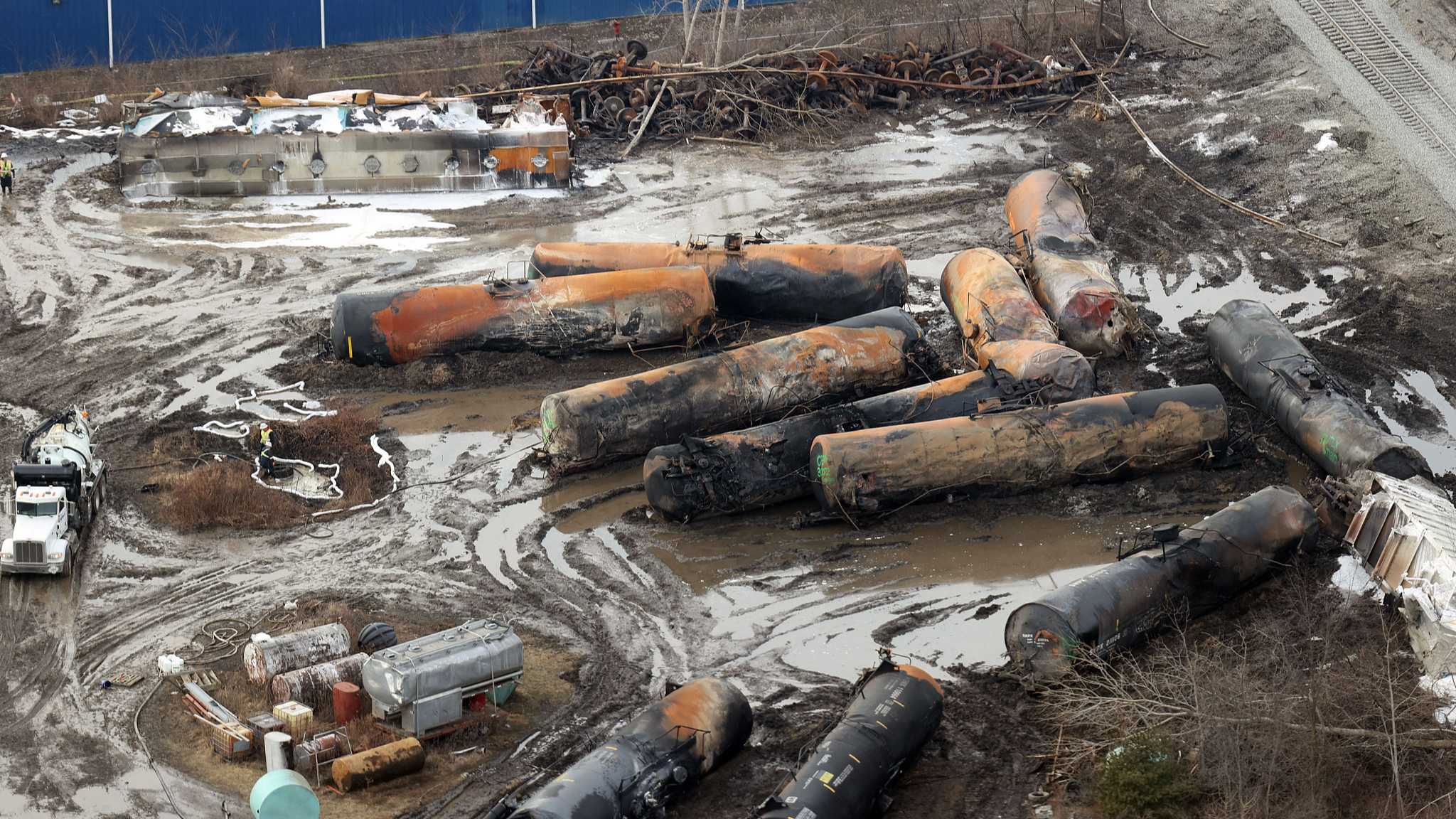A federal agency released a preliminary report Thursday on the derailment of a train carrying hazardous chemicals in East Palestine, Ohio, earlier this month.
The report issued by the National Transportation Security Board (NTSB) said the Norfolk Southern train passed three hot-bearing detectors on its trip before the derailment on the night of February 3.
The function of the hot-bearing detectors is to detect overheated bearings and provide audible real-time warnings to train crews.
One of the hot-bearing detectors "transmitted a critical audible alarm message instructing the crew to slow and stop the train to inspect a hot axle," according to the report.
After hearing the warning, the train engineer "increased the dynamic brake application to further slow and stop the train," and the crew later observed fire and smoke and notified the dispatcher of a possible derailment.
The derailed equipment included 11 tank cars carrying hazardous materials that subsequently ignited, fueling fires that damaged an additional 12 non-derailed railcars.
First responders implemented a one-mile evacuation zone surrounding the derailment site that affected up to 2,000 residents. There were no reported fatalities or injuries.
Responders mitigated the fire on February 5, the NTSB report stated. But five derailed "specification tank cars carrying 115,580 gallons of vinyl chloride" continued to concern authorities because the temperature inside one tank car was still rising.
This increase in temperature suggested that the vinyl chloride was undergoing a polymerization reaction, which could pose an explosion hazard.
Vinyl chloride is a colorless gas that burns easily. It does not occur naturally and must be produced industrially for commercial use. Exposure to vinyl chloride is associated with an increased risk of a rare form of liver cancer as well as primary liver cancer, brain and lung cancers, lymphoma, and leukemia.
The NTSB said on Thursday that responders scheduled a "controlled venting" of the five vinyl chloride tank cars to release and burn the vinyl chloride and dug ditches to contain released vinyl chloride liquid while it vaporized and burned.
The controlled venting began on February 6, which discharged toxic and potentially deadly fumes into the air.
While residents were allowed to return to their homes in East Palestine two days later, they remain concerned about the handling of the incident as well as the health impact of exposure to those chemicals.
The hazardous material tank cars have been decontaminated, the NTSB said. The agency's investigators returned to Ohio earlier this week to "examine each hazardous material tank car, document damage, and secure evidence for laboratory analysis."
The NTSB added that the investigation is ongoing and will focus on the wheelset and bearing; tank car design and derailment damage; a review of the accident response, including the venting and burning of the vinyl chloride; and railcar design and maintenance procedures and practices, among other things.


